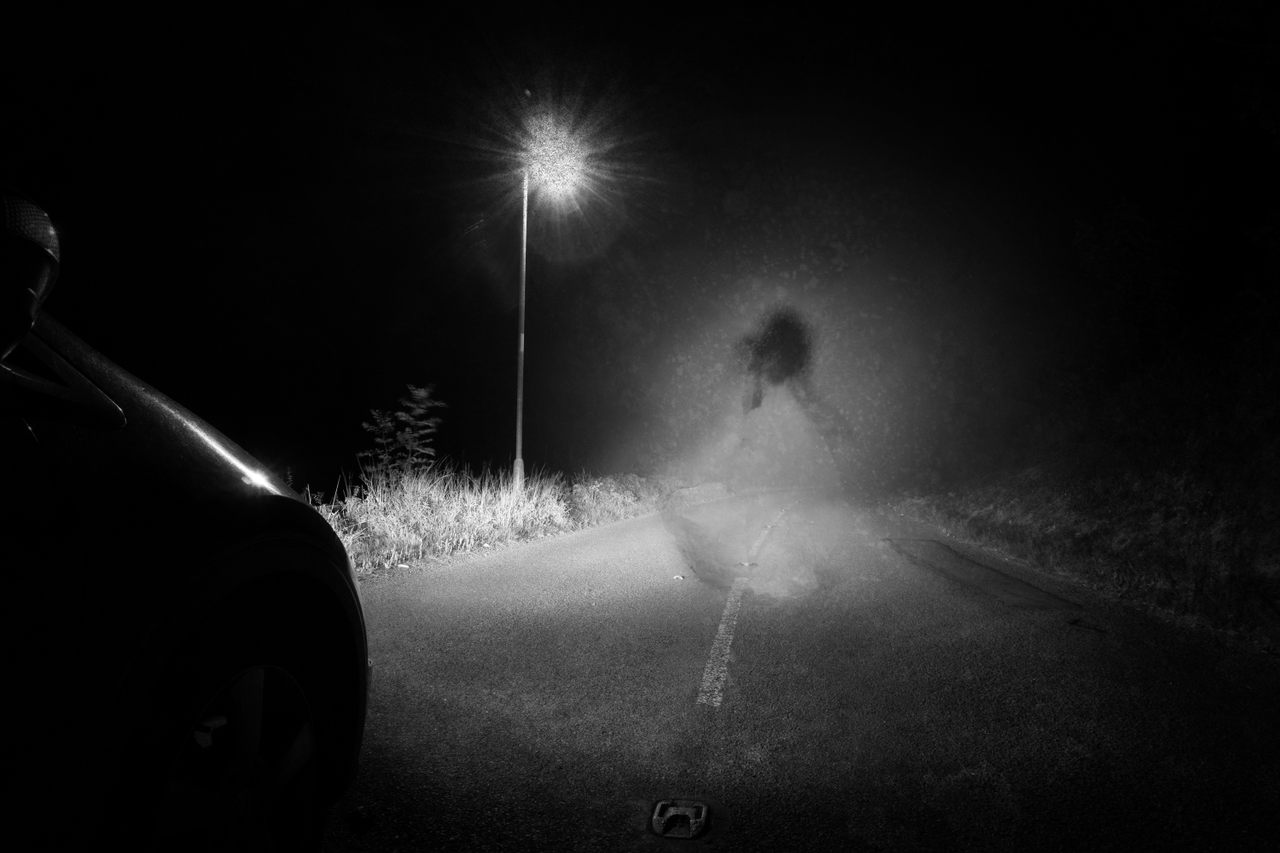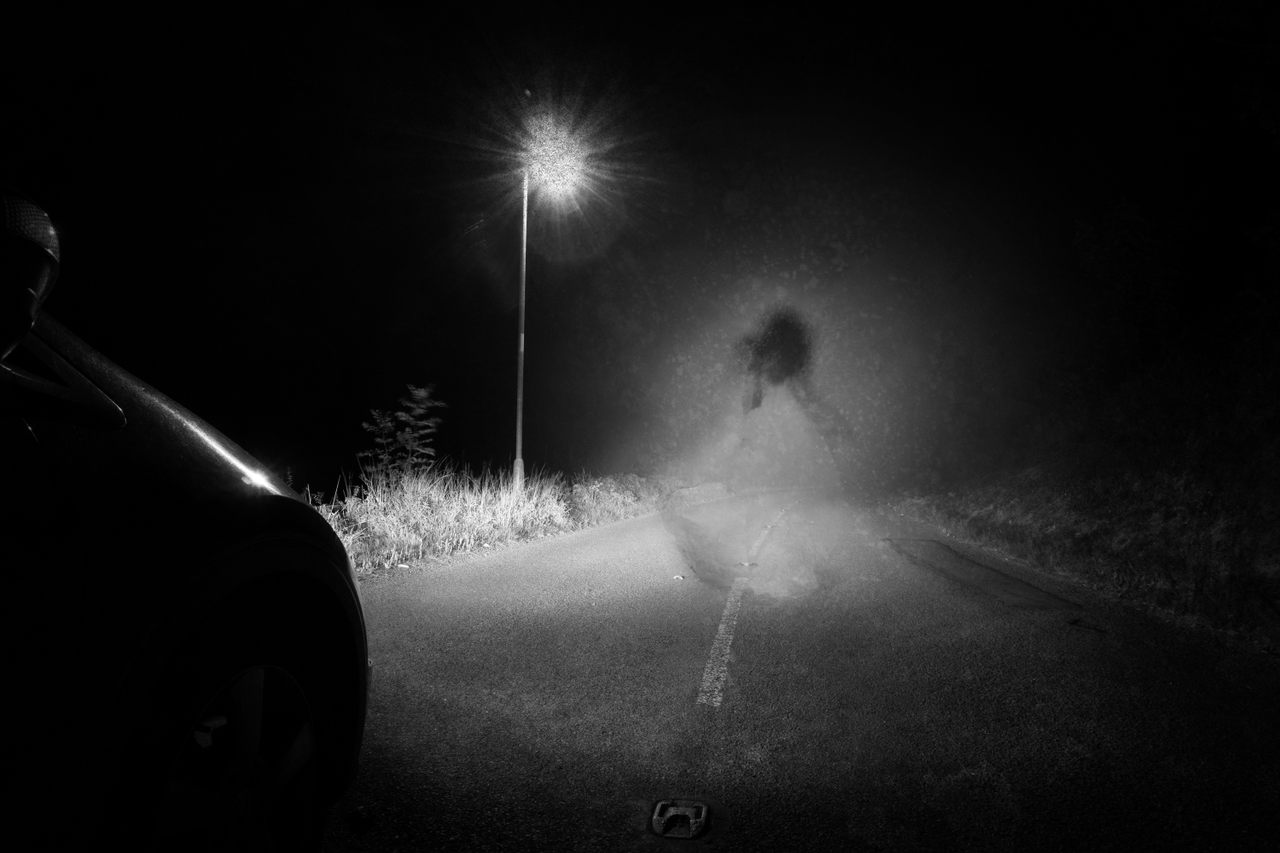The Origins of the Vanishing Hitchhiker: A Ghostly Tradition
The legend of the Vanishing Hitchhiker has haunted the roads of America since the 1930s, but its roots stretch back much further. European folklore from centuries ago tells of travelers encountering ghostly figures on horseback, a precursor to the modern tale. With the rise of automobile culture, these stories evolved. Folklorists Richard K. Beardsley and Rosalie Hankey documented nearly 80 versions of the legend in the 1940s, cementing its place in American folklore.

Credit: Atlas Obscura
Interestingly, the legend reflects societal anxieties. During the 1930s, as cars became more common, so did fears of traveling alone at night. The Vanishing Hitchhiker became a cautionary tale, warning drivers about the dangers of picking up strangers. This blend of history and fear makes the legend timeless, resonating with audiences even today.
The Common Elements: A Tale of Ghosts and Disappearances
At its core, the Vanishing Hitchhiker story follows a predictable yet chilling pattern. A driver picks up a hitchhiker, often a young woman, only for them to vanish before reaching their destination. In some versions, the hitchhiker leaves behind a personal item, like a coat or a book, which the driver later discovers belongs to someone who died years ago.
Adding to the intrigue, some variations include prophetic elements. The ghostly passenger might predict future events, such as the end of a war or a natural disaster, before disappearing. These prophetic twists heighten the legend’s mystique, leaving drivers—and readers—wondering about the thin veil between life and death.
Locations and Legends: The Vanishing Hitchhiker Across America
The legend has taken on local flavors across the United States. One of the most famous versions is “Resurrection Mary” in Chicago. According to the tale, Mary was a young woman who died in a car accident near Resurrection Cemetery. Her ghost is said to hitchhike along Archer Avenue, only to vanish as the car passes the cemetery gates.
Other regions have their own versions, each tied to local landmarks and histories. These localized tales make the legend feel personal, as if the ghost could appear on any dark road, in any town. This adaptability ensures the story remains relevant, no matter where it’s told.
Misconceptions and Global Variations: The Legend Beyond Borders
A common misconception is that the Vanishing Hitchhiker is purely an American phenomenon. However, similar tales exist worldwide. In Mexico, the legend of “La Llorona” features a ghostly woman searching for her lost children, often appearing to travelers near bodies of water. These global variations highlight universal fears about trust, safety, and the unknown.
These stories aren’t just about ghosts; they reflect deeper societal concerns. Whether it’s the fear of trusting strangers or the uncertainty of travel, the Vanishing Hitchhiker legend taps into anxieties that transcend cultures and time periods.
The Science of the Supernatural: Why We Believe
While the Vanishing Hitchhiker legend hasn’t been scientifically verified, it continues to captivate. Folklorists and anthropologists study these tales as reflections of societal fears. The legend thrives because it blurs the line between reality and the supernatural, making it easy to imagine encountering a ghost on a lonely road.
Roads, by their nature, are liminal spaces—places where the known meets the unknown. The Vanishing Hitchhiker embodies this liminality, appearing at the threshold between life and death. This psychological depth adds layers to the legend, making it more than just a spooky story.
The Vanishing Hitchhiker in Popular Culture: From Folklore to Film
The legend’s appeal extends beyond campfire tales. It has inspired countless films, TV shows, and even music. Orson Welles’ 1951 short film Return to Glennascaul and the 1998 K-Mart commercial for Route 66 jeans are just a few examples. The motif of the Vanishing Hitchhiker continues to evolve, adapting to new cultural contexts and societal concerns.
In modern storytelling, the legend often serves as a metaphor for isolation or the dangers of modern life. Its enduring popularity proves that, even in an age of technology, the allure of the unknown remains powerful.
References:
The Vanishing Hitchhiker Legend Is an Ancient Tale That Keeps Evolving – link
Have we seen the last of the vanishing phantom hitchhiker? – link
13 Days of Halloween Tales of Terror: Red-Headed Phantom – link
Categories: Do you know, Folklore, Ghost Stories, Urban Legends
Tags: folklore, ghost stories, supernatural, Urban Legends, vanishing hitchhiker
Religion: N/A
Country of Origin: Europe, Mexico, United States
Topic: Urban Legends
Ethnicity: N/A


